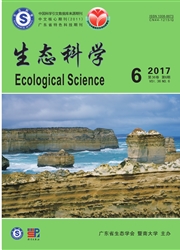

 中文摘要:
中文摘要:
以青海湖粘球藻(Gloeocapsa sp.)为研究材料,通过生物化学和对比分析的方法,研究了外源添加过氧化氢(H2O2)(0.5 mmol·L^-1)对长期增强UV-B(2.4 W·m^-2)胁迫下其生理的影响。研究结果显示,与增强UV-B胁迫下的藻细胞相比,加入0.5 mmol·L^-1 H2O2减缓了藻体生物量的减少,提高了其蛋白质含量,表明H2O2对增强UV-B胁迫给藻体带来的损伤有一定的缓解作用。进一步研究发现,加入0.5 mmol·L^-1 H2O2明显(P〈0.05)提高了增强UV-B胁迫下藻体细胞内脯氨酸和类黄酮含量及CAT与SOD的活性,并降低了藻体细胞内MDA含量,表明H2O2可以通过增加细胞抗氧化物质及抗逆物质的含量来缓解UV-B胁迫对藻体造成的损伤。说明H2O2不仅对高等真核生物在抵御逆境胁迫中可以起到信号分子的作用,在原核生物中也具有此功能。为将来的逆境胁迫抵御机制的研究途径提供参考。
 英文摘要:
英文摘要:
Through the methods of biochemistry and comparative analysis, Gloeocapsa sp. from Qinghai Lake was investigated to study the effect of exogenous hydrogen peroxide(H2O2)(0.5 mmol·L^-1) on cyanobacteria exposed to enhanced UV-B stress(2.4 W·m^-2). The result shows that compared with cyanobacteria stressed by UV-B radiation, the biomass decline of gloeocapsa dealt with exogenous hydrogen peroxideis was relieved and the contents of protein, proline and flavonoids were increased. The activities of CAT and SOD were improved and the MDA content was reduced at the same time after 0.5 mmol· L^-1 H2O2 was injected. It proves that through the way of increasing the antioxidant substances contents and the activity of CAT and SOD, H2O2 has the ability to mitigate the damage of the algae caused by oxidative damage under enhanced UV-B stress. It indicates that H2O2 has the ability to protect both eukaryote and prokaryote under UV-B stress. It also provides information for the study of resisting mechanism against the adversity stress.
 同期刊论文项目
同期刊论文项目
 同项目期刊论文
同项目期刊论文
 期刊信息
期刊信息
